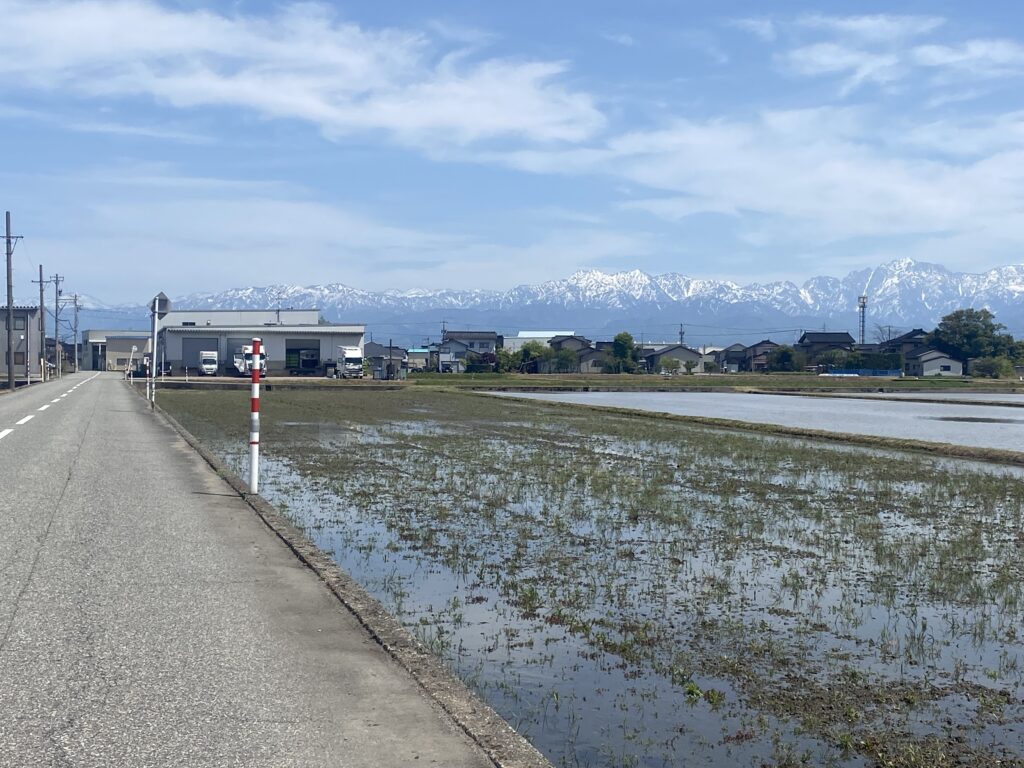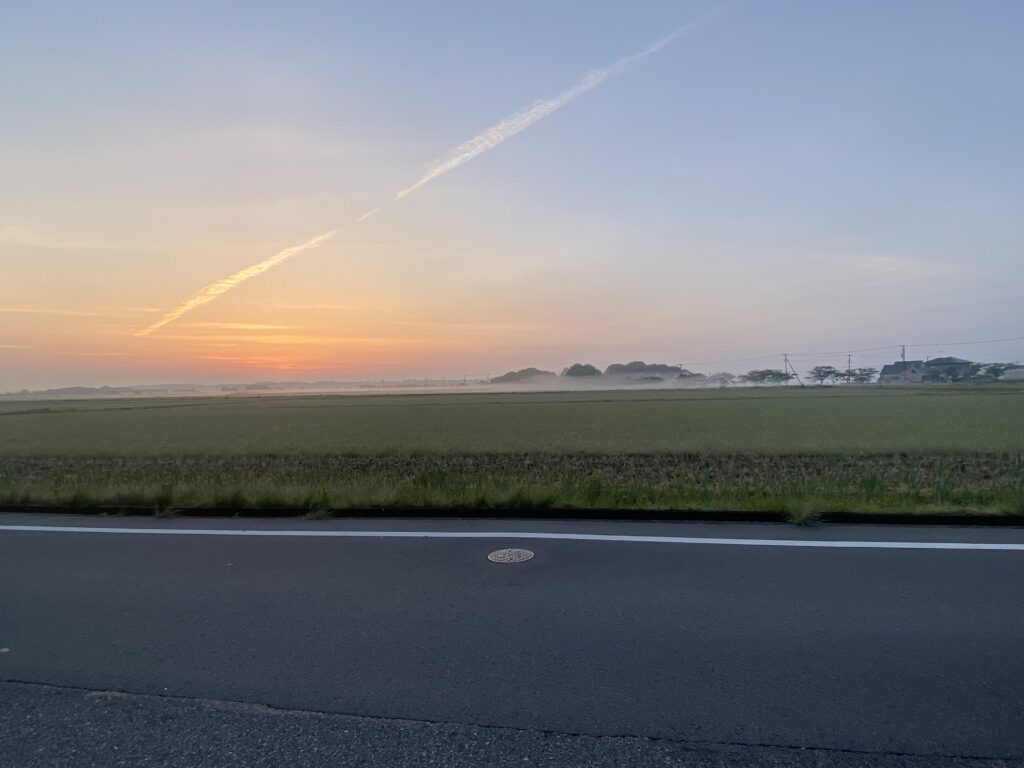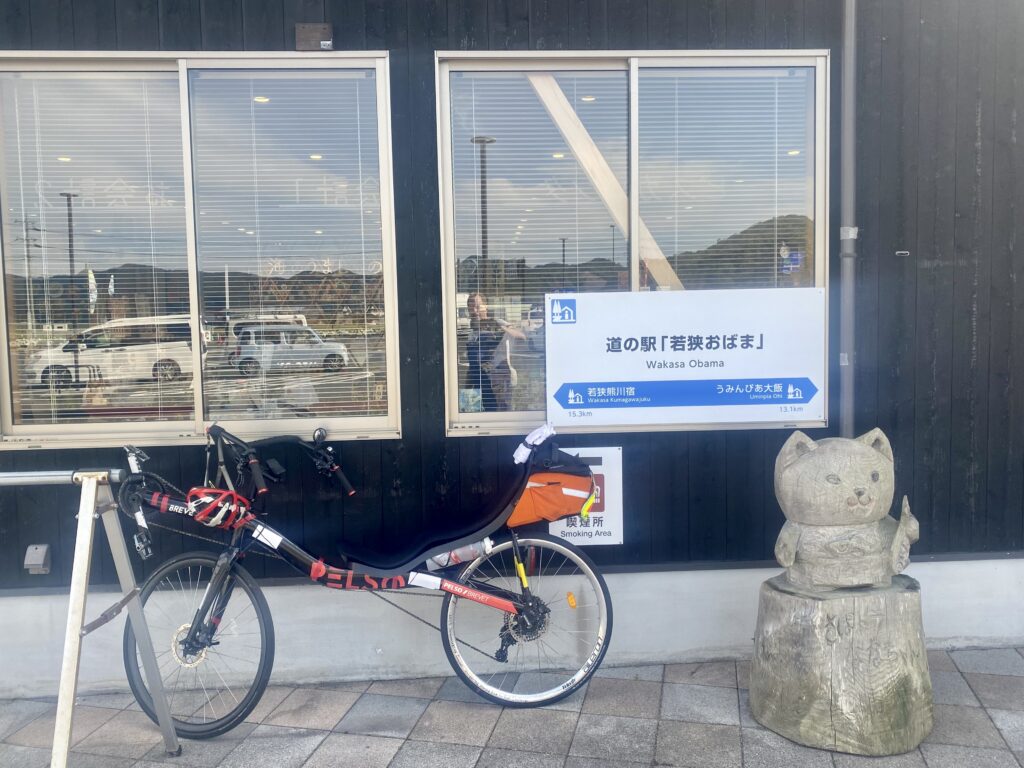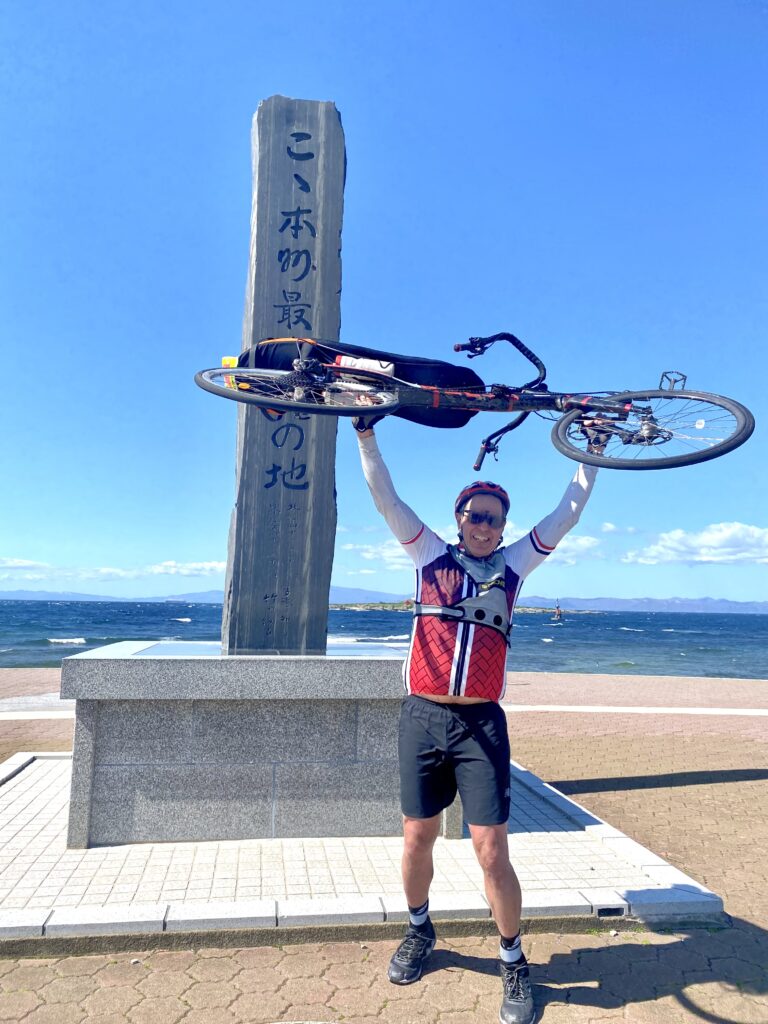Congratulations to David Litt for setting a new Unsupported Record for the main Island of Japan (Honshu) in the S-N direction in the Male, recumbent, 60-69 age group
David completed the incredible 1036 mile journey in 5 days 17 hours and 16 minutes totally unassisted!
This is also a new Guinness World Record and is not an age group record









Narrative Summary of Ride
David G. Litt
1. Record Attempt
Honshu (Japan main island) S->N regional crossing
2. Name of Rider
David G. Litt
3. Start date and exact start time
April 26, 2023, 20:43
Note: Exact start date/time confirmed by GPS enabled photo taken on bridge at start. Log book was signed (actually sealed) by hotel clerk when I left the hotel nearby at 20:30. No one was around on the bridge at that hour.
4. Exact Start location
Kangen Bridge, Shimonoseki, Yamaguchi Prefecture.
On Prefectural Route 250, ~1.5km SSW of Shimonoseki Station west exit, at the crossing of the small channel from Hikoshima to Honshu.
33.93875669749187 N, 130.9153073508708 E
33°56’19.5″N, 130°54’55.1″E
https://goo.gl/maps/BtBDuud7J8WfbtzX6
5. What were the conditions like?
I timed the ride in the hope for good weather in this season and was generally not disappointed. Temperatures ranged from around 5 degrees Celsius to 25 degrees Celsius over the 5 ½ days, coldest the first and last nights. I rode in rain on the night of April 29 (into morning of the 30th) as I approached Niigata City, and again in colder rain on the night of the May 1 (into early morning of May 2) in Aomori Prefecture. Otherwise it was dry.
I benefited from a tailwind during much of the 250km stretch north along the coast of the Sea of Japan from Niigata City to Akita City – a true “kamikaze” or “God wind” as the Japanese would say. Maybe to compensate for that tail wind, the last 50kms of the ride, WNW along the coast of the Shimokita Peninsula to Cape Oma, was done into a gale force headwind.
6. Why did you want to do a record?
I read a few years ago that Takaoka-san, an amateur racer and cycle shop owner near me in Tokyo, had set a Guinness record for a fully supported ride from the southern tip of Kyushu to the northern tip of Hokkaido. This sparked my interest. I love long-distance cycling, but recent years with the pandemic and other things going on in my life, have found it difficult to train adequately for or complete randonneuring events longer than 600kms. I thought that planning a record attempt would give me a worthy goal for the year. Also, I got my Pelso Brevet recumbent in 2021. I’ve ridden it on two 400km brevets, but nothing longer. I considered it a good challenge to figure out a flat-enough course of this length in Japan – a very mountainous country – that would work well with a recumbent.
But I realized that such a record requires a lot of logistical support and time and is beyond the resources of most long-distance cyclists I know in Japan. I thought it better to try a ride that covers only Honshu (no need for a ferry from Aomori to Hokkaido, which makes comparison of two efforts far more difficult). I hope that this “Honshu end-to-end” record will prove very popular as a course for comparison of efforts. Since this ride can be done within a week, including getting to the start and back from the finish, it is consistent with Japanese vacation schedules for many more amateur cyclists than a longer ride that adds Kyushu and Hokkaido.
The creation of a WUCA “unsupported” category made me decide to go for it. The unsupported category matches my style of riding. I am not, and never will be, a racer. The journey will always be as or more important than the destination. And the unsupported category was exactly what I had hoped to do.
7. What Equipment did you use? Anything special?
I rode a Pelso Brevet recumbent that I bought in early 2021. The Pelso seems not as fast as some other performance recumbents (Cruzbike Vendetta, M5 …) but is good for long distance rides. The main changes to stock components were:
(1) change from the 42-teeth, 170mm crankset to a 44-teeth, 165mm crankset,
(2) 11-46 rear cassette instead of the stock 11-42,
(3) use of a different set of wheels borrowed from another bike of mine – Velocity Aileron rims, an SP Dynamo front disk brake hub (SD-8, I think), a White Industries rear disk brake hub,
(4) Busch Mueller IQ-XS front light and Busch Mueller Secula rear light (for 24-7 lighting powered from the dynamo hub … supplemented by other and spare lights for actual low-light, tunnel, and night riding).
(5) Radical Designs solo aero rear bag … this 12 liter rear bag is a beautiful piece of gear and carries a lot of stuff without an aero penalty.
Unlike a road bike, I ride the Pelso recumbent with flat pedals and wearing running shoes. I find that I want to shift slightly forward and backward on the bike’s seat (and to change the contact point between my foot and pedal) as I ride, especially if I start to experience any pain in a knee or ankle. Also, given the distance I need to move my leg in order to “put a foot down” from a high recumbent, I don’t want the extra step of unclipping before I can do so.
8. What did you eat and drink.
For most of the trip, I survived on Japanese convenience store food. I have a pretty long list of items sold in these stores that seem filling and easy on the stomach to digest as I ride. The list starts with lots of pastas, gratins, and rice “doria”. One of those items, and a cup of coffee (hot or iced depending on weather) is a pretty reliable core of any convenience store meal stop. Often I would add a yogurt drink. And add an onigiri (rice ball) or a Snickers Bar to put in my pocket to take with me and consume along the road. I carried some “Be Kind” energy bars that I got at Costco here and seemed very easy to eat, as well as some mixed nuts. I had a couple “sit down” meals at family restaurants (Gusto) or fast food places (MosBurger) later in the ride. Now that I am done, I need to catch up on my vegetables!
And I had some spectacular charcoal grilled tuna steak (hon-maguro – O-toro) and grilled scallops (hotate) at the end of the ride in Cape Oma, a famous spot in Japan for its maguro fishing fleet.
I drank mostly water, but also Suntory “Green Dakara” hydration drink, usually at warmer times of the day. Green Dakara is available in nearly all the major convenience stores, and it is less sweet and does not cause the same stomach issues that I experience with other similar products sold at such stores (Pocari Sweat, Aquarius). Also I had yogurt drinks pretty regularly, and maybe 4 cups of coffee per day, a bit more later in the ride.
9. What was the best part?
There is never only one “best” part on a ride this long.
I love riding at night and around dawn and dusk. The roads are empty and the mood is often magical. I felt the magic for the first time on this trip before dawn on April 28, as I passed by Himeji Castle and continued through Kasai City, Kato City, and Nishiwaki City, all in Hyogo Prefecture. There were empty roads, beautiful flowering gardens, mist on the fields as the first light appeared, and then fog along the Kakogawa River, waters roaring and cranes standing alert on rocks in the middle of the current. I included a few photos.
The other really magical section was the coastline north from Murakami City, Niigata Prefecture, toward Akita on the evening and night of April 30. This seacoast is quite dramatic at many places, with rocks protruding from the waters, waves crashing, the road going via tunnel through huge rock outcroppings, etc. I could have taken a thousand photos … and did take at least a few. I was blessed with cool, dry weather, a beautiful sunset, low traffic volumes, and a spectacular tailwind. At times I felt as if I were “sailing” the recumbent on a broad reach with the wind from my left rear! I shifted my weight over the left edge of the bike seat to keep the bike upright as the wind pushed it forward. The tailwind meant I could make excellent progress at a point in the ride when fatigue otherwise might have slowed me a lot.
Ending the ride at Cape Oma also was fantastic. The coast approaching the finish was beautiful, on a day with a deep blue sky, some sakura (cherry blossoms) remaining in bloom this far North. And the headwind here brought the freshest air I can imagine.
10. What was the hardest part?
The low point of the ride was in the heaviest rain during the wee hours of April 30, as I passed through a large agricultural area with few landmarks south of Niigata City and my rear tubeless tire lost air. The rear wheel’s rim had acquired a large dent in it the day before on a descent into Maizuru (Kyoto Prefecture) when I hit some road debris, but had held up for more than 24 hours, so I am not sure if that had any connection to the loss of air. In any event, sealant did not stop the leak. I tried to add some IRC “respawn” additional foaming sealant, and that also did not work. In the end, I needed to remove the wheel from the bike (which is harder to do on my Pelso than on a road bikes), remove the valve that seemed stuck firmly into the rim, insert a tube, and pump it up with a hand pump, all exposed in the pouring rain and pitch dark. This process of diagnosis and repair seemed to take hours.
After I got back on my bike and continued a few minutes I found a coin laundry where, if I had just walked 10 minutes, I might have done the entire repair process in a warm, dry setting (the laundry had a note written on paper saying that its hours were 6AM to midnight … but the door was open and ajar at 4AM. Japan is a very safe country!
Another low point was the segment from Akita City to Odate on May 1. I left Akita City before rush hour, but traffic was extremely heavy on the road I needed to follow – no good alternative — and traffic continued heavy all day. There were lots of climbs on this stretch, and climbing when very tired on the recumbent, with cars and trucks constantly roaring by, is not fun. I later tried to take an alternate route to Odate that would save some distance, but that was no shorter. In Odate, I wandered around dazed and confused trying to find the hotel I had booked. By now I had missed my reservation, but I needed the change of clothing I had shipped there. More time gone.
11. Did anything particularly unusual happen?
Riding a recumbent often gets one a double take in Japan. An obvious foreigner (caucasian, 187cm and ~100kg) riding on one, even more so. There were the nerdy guys who took videos of me out of car windows, not a few of whom raced ahead and pulled over to the side of the road so they could get a good photo or video as I passed. There was one guy who had pulled over, hopped out of his car, and tried to run alongside to hand me a canned coffee drink … which I refused as politely as I could without stopping. There were dozens of groups of school kids chatting by roadside as they walked home in the afternoons, until one would see me and shout out something like “NANI AR-E!? MIT-E!” (“What’s that? Look!”), and the entire group would chatter.
I would call this route the “energy tour” of Japan. Over the first two days, I passed within a few kilometers of a number of solar power projects I developed in 2012-2015 period. Then in Fukui, Niigata, and Aomori, I rode the cities/towns of Takahama, Oi, Mihama, Tsuruga, Kashiwazaki Kariwa, Rokkashomura, and Higashidori – all known as sites of major Japanese nuclear power facilities that have been tied up in legal disputes and discussions about the role of nuclear power in Japan post-Fukushima disaster. That said, I could not see any of the nuclear plants
12. Exact finish Location
Cape Oma (Omazaki) in Aomori, at the monument identifying the northernmost point of Honshu.
41.54638705463183 N, 140.9126434005875 E
41°32’47.0″N, 140°54’45.5″E
https://goo.gl/maps/nfDpFmhkvPqLekLZ8
13. Exact finish time
May 2, 2023, 13:59.
(Exact finish date/time confirmed by GPS enabled photo taken at the finish monument).
